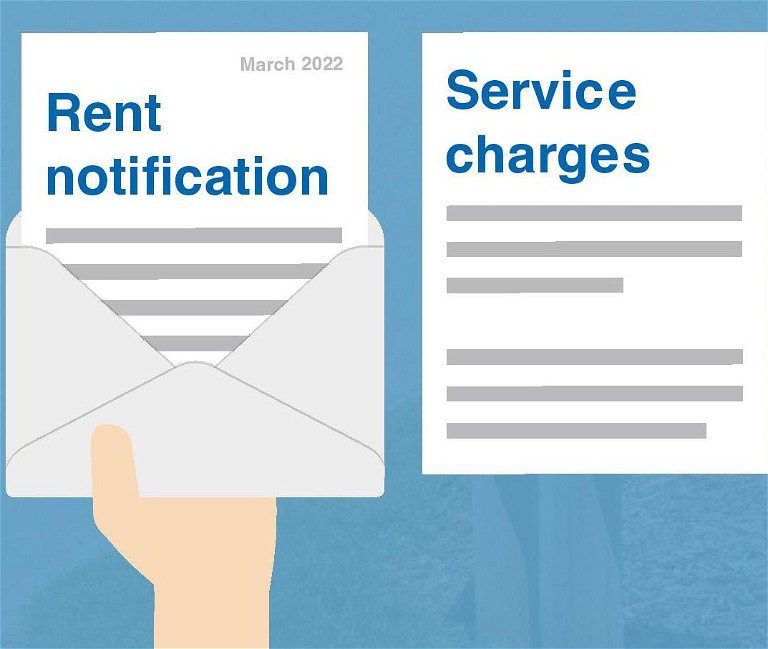RENT AND SERViCE CHARGE CHANGES
WE HAVE WRiTTEN TO RESiDENTS TO LET YOU KNOW WHAT YOUR RENTS AND SERViCE CHARGES WiLL BE FROM THiS MONTH.

We have written to residents to let you know what your rents and service charges will be from this month.
Our tenants get excellent value for money. Most of the social rents we charge are lower than other housing associations in Plymouth and they are also amongst the lowest in England (on average we have the fourth lowest social rents).
The majority of our rents are at least 40% lower than it would be to rent the same property from a private landlord.
Some of our tenants pay affordable rent which can be between 20% to 30% lower than if rented privately.
Because we are a social landlord, we do not pass profits to shareholders so money from rents is invested into looking after homes, estates and communities for our existing tenants, and building more homes for future residents.
HOW WE SET OUR SOCiAL RENTS
We set our social rents using a formula from the Government, which allows us to increase social rents using the Consumer Prices inflation index, plus 1%.
Any service charges are in addition to the social rent. They are set to cover costs and not make a profit. Therefore they can go up or down each year depending on what we estimate the cost of providing the services will be. This includes any 12 adjustment to reflect the actual cost of services from previous years compared to what we estimated those costs would be.
RENTS THiS YEAR
Like many businesses and households, we have experienced a significant increase in costs over the past year and these are set to continue rising next year. This means it is more expensive for us to repair, improve and manage our homes. The rents paid by our residents help us meet these costs.
We set our rents using a Government formula, which allows increases of inflation+1% (using the September CPI inflation rate at 3.1%). So this year the majority of tenants will see a 4.1% increase in rent. This applies to anyone paying social rent or living in home built in the last 10 years.
Shared Ownership residents and most customers who rent garages and parking spaces will also see a 4.1% increase in rents.
This is only the third time we have increased our rents since 2016 and means in real terms, our tenants will be paying on average just £4 per week more from April 2022 when compared with their rent from 7 years ago.
Tenants living in homes built more than 10 years ago paying affordable rents will see a decrease of up to 7% to help reduce the difference between our affordable and social rents on older homes.
To make sure our homes are more affordable, this year we have decided to limit all our general needs rents, for affordable rents and social rents plus service charges, so they do not go above the LHA (Local Housing Allowance).
These rates are set by the Government to limit the level of housing benefit or housing allowance as part of Universal Credit paid for rents to private landlords. Although PCH does not need to do this, we have chosen to adopt the LHA rates as it helps make sure our homes are more affordable for all. Only a small number of our tenants in homes built in the last 10 years are affected by this decision, as rents for these properties are generally higher, and they will see a smaller rent increase than other tenants and, in some cases, a reduction in rent.
HOW WiLL I KNOW WHAT CHANGES ARE BEiNG MADE TO MY RENT?
All tenants will get a letter explaining their rent and service charges and what the changes mean for them.
SERViCE CHARGES
If you pay a service charge, it will be shown in your rent letter along with any changes to the amount you will be asked to pay for the coming year. You are very likely to see an increase in your service charge this year, as the cost of utilities such as water, gas and electric have risen nationally. This is a situation most households across the country are facing and we will be sharing advice about where to turn to for financial support if you need it.
RENTS iNVESTED BACK iNTO PLYMOUTH AND SURROUNDiNG AREAS
We know that any change in household finances can be difficult. Your rent helps us to keep homes in good repair, make necessary improvements and build more affordable homes, so that we can meet the needs of local people both now and in the future. We know that your home is important to you and we make sure that your rent goes back into providing good quality affordable housing and supporting the communities where we work.
That’s the difference we make as a landlord – we give back to help residents already living in our homes and future residents.
More information and useful animations are available on our website.
